

 Those sitting comfortably in WW2 history have for certain, sooner or later learned of the Tiger I. The Legendary German Heavy tank which many consider one of the most powerful machines ever to be constructed during WW2. Of course, putting aside the almost legendary stories of how the best have used the Tiger we end up with a decently gunned and armored long range “Sniper” tank. Disappointed? You should not be. But before we reach that far and enjoy the happy days of sniping down both lighter and heavier tanks with our Tiger there is still a matter of getting that far.
Those sitting comfortably in WW2 history have for certain, sooner or later learned of the Tiger I. The Legendary German Heavy tank which many consider one of the most powerful machines ever to be constructed during WW2. Of course, putting aside the almost legendary stories of how the best have used the Tiger we end up with a decently gunned and armored long range “Sniper” tank. Disappointed? You should not be. But before we reach that far and enjoy the happy days of sniping down both lighter and heavier tanks with our Tiger there is still a matter of getting that far.
Now, although I have been a user of the Tiger back in the Beta I had to start my long road to the Tiger over again, so I shall provide a few tips and tricks on surviving this trip, and essentially writing a few reviews on each tank that I will have to use. Assuming a straight line from the Leichttraktor through the P4 and VK3601 to the Tiger itself. Let us begin this long and tiresome trip, skip ahead if you like to. (As of now the whole guide is not yet complete).
The Toddler’s first step: The Leichttraktor
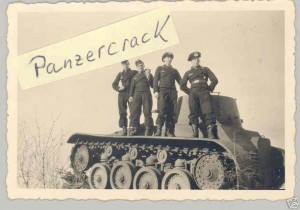
The Crew of the “Panzercrack” Leichttraktor. It later turned out it did crack a lot.
A common laughing stock among more experienced panzer drivers. The Leichttraktor is the first “tank” you will have the chance to use. Seen as inferior in every possible way to its older cousins it is a tank which you will use to learn the ropes in World of Tanks. It has a low speed, poor flexibility, and its shape does not help when fighting enemy tanks of equal tier. Surprisingly though, even though it might seem a complete waste of time at the beginning and cause a lot of stress a fully upgraded and well played Leichttraktor is capable of doing plenty of damage to an exposed enemy. The 2cm Breda although having slightly worse penetration than the standard gun, and lower damage output per “hit” is capable of causing a lot of confusion on an unexpected enemy. If said foe is using manual aim it is likely that during your “Pew Pew” barrage his next shot or two might completely miss. The basic gun is better for engagements calling for a larger distance and accuracy. However the 2cm Breda up close during a successful flank attack will do much more damage.
A question of style, the Leichtraktor can take on a decent defensive role with its basic gun at a distance, while the 2cm Breda will shred a foe to pieces but call for a much closer firefight. Although slow you should use terrain to your advantage, especially if you have to hide that giant hull of yours, and flank an enemy tank or even force. On some maps natural terrain will be your best friend. Do pay attention to any obstacles as they might stop you entirely, and in the case of fully developed tanks slow you down greatly. Also, do take note, you have very weak armor. Exposing yourself to even two enemy guns will call for your destruction in mere seconds.
Panzerkampfwagen II: The Lord of “Pew Pew”
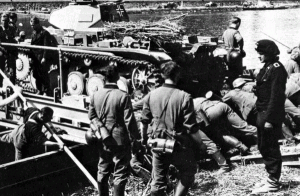
First german attempts at using “Manpower” rather than “Horsepower” to drive their tanks forward
You must feel incredible now. You have finally bought yourself a P2! Something better than the “Loltraktor”. Here is the catch you got a better tank, yes, but can you use it? With the Leichttraktor you had the option of using a “fair distance” gun. And now you are stuck with a tank which has only “Pew Pew” cannons. End of the world? Not at all. The P2 in its basic stock, is as much use as a Leichttraktor on a bad day. But a fully upgraded P2 is a machine to be reckoned with. What it needs is a good driver, you. According to statistics, the P2 has only a slightly bigger maximum speed than the Leichtraktor. However you will feel a difference in engine power. Trees and certain obstacles will not longer hinder you this much. Also, still being a relatively low tier you will have a chance to shine on higher tier battles. The P2 however calls for a specific type of mentality. It has a better shape, speed and overall better gun than the Leichttraktor, but you have to attack up close. End of the world? Not at all. If you learned to use the Leichttraktor with the 2cm Breda, then the P2 will be just like that, only much, much easier.
Learn more about the use of cover and if there is an opportunity to flank somebody, use it. Although the P2 is not a good defensive tank if you dig yourself in you will be more than enough trouble to an unexpecting foe. Remember that on some maps there are stone walls through which you can break through easily. Shock your foes by attacking from directions they do not expect you to! Do note however you are still not the king of the world, and sometimes you will end up facing Tier 3 tanks. That is when all your knowledge of flanking and surprise attacks will be tested. These bad boys cannot be taken head on without you suffering a lot of damage. Aim for the rear and remember sometimes higher tier tank drivers are too certain of their tank’s strength and they might advance alone. Also note that SPGs are sometimes left unguarded, look for an easy path to them and perform a deadly surprise attack. TDs will be a big problem. Be aware of likely positions they might be hiding in. More importantly do not take them head on at a long distance, your gun is not designed for such fighting.
The distant taste of Mediums: Panzerkampfwagen III Ausf A
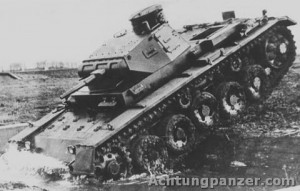
Early testing of the P3 A submarine
Now, you ended up with this. You have a tank which you will end up using against much heavier tanks, with a very poor gun and inadequate armor. Welcome to the P3 A. Now, you might think, how will you ever cope with something that looks like punishment compared to the P2 or even the Leichttrsktor? Patience skipper. The P3 A is poorly armored and at first poorly gunned but this changes once you sit down and crack at it for a good while. Remember, this is the tank that you have to pull through to get the ordinary P3 so consider this practice. The P3 A once fully upgraded has impressive (though not overly so) speed, a decent gun, and most importantly an attitude of an adventurer. This tank with its speed and cannon begs to charge into the enemy ranks and fire off, or quickly position itself on a ridge to fire down at a foe. Use your speed and decent gun to reach decent positions and fire off at advancing enemies. Upgrade your radio to get enemy reports and act as an early sniper tank.
The main weakness of the P3 A is its armor. An inexperienced crew will also make it troublesome to use this tank. Only with time will you learn to use the few strengths of the P3 A to your advantage, but once that happens you will find it a friend at the least, with a decent “credit output” if played right. Also, get used to the shape of the P3 A as the next tank on your path, and even the one after that will be just that, only a bit bigger.
Panzerkampfwagen III: The first of the Mediums (not at all average)
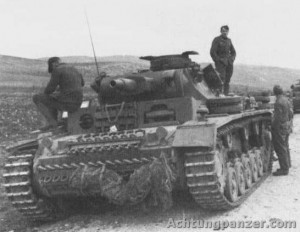
A P3 Crew resting after knocking out fifteen MS-1s
Your first actual Medium tank. The differences compared to the P3 A? Much tougher armor, much more health, slightly lower speed, overall more satisfaction. Now, however, if you found the P3 A to be tough, the P3 will only get tougher and you will often be ditched into battles against Tigers, ISs and Pershings. Panic? Nah. You just need to realise a number of things about this first Medium tank. First of all when it is unupgraded it is still better than the P3 A, so you can easily handle lower tier tanks effectively. Once fully upgraded you have a choice between two cannons. The 5cm “Long Shot” and the 7.5cm “Stubby”. There is an actual difference between the two cannons, but in short each one has its uses. The 5cm Long Shot has better penetration, but lower damage than the Stubby. The Stubby has terrible penetration when using HE ammunition, but the damage output is impressive.
Now, having these two cannons in mind, how should you play the P3? Much like you played the P3 A, is the simple answer. Flanking is still your bread and butter, and this is mainly because you will end up fighting tougher tanks. Failing to use the combination of your speed and decent armor means you will be easy picking for equal or higher tier artillery and TDs. With the decent number of really big maps the P3 is a fast response tank capable of quickly traveling from place to place and effectively damaging almost any tank. I personally used the “Stubby” 7.5cm cannon, sometimes I ended up facing those terrifying Soviet IS tanks. But, instead of panicking, assuming you have a distant position or are on either of its flanks the Stubby is capable of dealing some decent damage, considering the tier of the tank, or at least damaging its modules which might seem little, but if you damage its cannon, ammo rack or engine you become a huge credit to the team. Play the P3 like a support tank, which it is. If there is a group of friendly TDs help them out with your cannon, since you will be better in handling enemy scouts or flankers. Helping out your heavy buddies is also useful since your HE shells can at least confuse the enemy once they hit, or in the best case disable the enemy gun or turret. Lower tier tanks will fear you like fire, since they have weak armor and little health a hit from the Stubby could even mean a one shot kill. Just remember with the Stubby you have a lower rate of fire, and up close the Stubby might be an under achiever compared to the 5cm “Long Shot”.
Panzerkampfwagen IV: “That Tank”
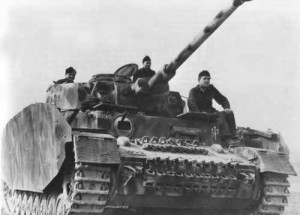
“Did we hit it?” the crew of the Panzer IV improvising after losing their scope and commander
Welcome to the one tank which was heavily used by the Germans during WW2. Although not nearly as powerful as the Panther which was also produced in quantity it is not a tank that can be simply ignored. The Panzer IV mixes speed, armor and a very good gun to easily argue with other tanks of its tier as one of the deadliest mediums available on the market. There are a number of reasons for that but let us look at the pure basics. Unlike the Panzer 3 the Panzer 4 relies on a different type of thinking. Although still quick you are not as quick as your predecessors, but the trade off is a gun much better suited for frontal engagements as well as armor which although very “boxy” in shape is still mildly thick. If you hold onto your “ordinary” turret you will find the Panzer IV a good “dogfighting” tank. Still holding enough speed and a quick gun which is very good at circling enemies, dealing a lot of damage to the rear or flank of the enemy, annoying the hell out of inexperienced heavy tank drivers, and become the bane of unexpecting SPGs as well as TDs.
There is another side to the Panzer IV which you have to be made aware of. If you had enough of dog fighting and would rather try something entirely different, welcome to the “Panther Turret” setup. You have two guns to choose from. The “Huge Stubby” and the “Long Nose”. The Long Nose is much more common among players due to its accuracy and incredible penetration. The “Huge Stubby” is much like the “Stubby” in the P3, in the sense that, once it punches through somebody’s armor, it hurts for a long while. In both cases, with the “Panther Turret” equipped your Panzer IV becomes something that could be classified as TD. This is because your turret and reload times will not permit for easy close quarters combat. Instead you will have to stay back, most likely behind cover due to the size of your turret, and fire off single shots at exposed enemies. Here, comes an important lesson which you will have to learn with your Tiger, once you reach it. In both the P4 “Panther Turret” and even a fully developed Tiger the turret rotation is slow. Not only that but your strongest armor is up front, and if you know somebody is charging from your flank your instinct would be to turn your turret. Edit: I am aware this information is out of date, but I keep it here for nostalgia’s sake.
In truth, turning your turret would most likely mean that by the time you aim at the enemy he would be behind you, especially, if you did not expect him. The trick which I learned with my Tiger is to turn the entire tank with your turret, to face the enemy. This grants you a number of boni. Firstly you now face the enemy with your toughest armor facing him. Second, if you tank is developed enough, your turret is already in position, together with your armor, ready to fire. Thirdly, you minimize the exposed area to the enemy (only the front, as opposed to your whole flank/length). The difference, I believe, is that the Tiger is capable of turning in its central axis (it does not move forward or back, if you just want it to turn), the Panzer four when you press left or right will also move slowly forward or back. Take this into account and do not sit in a corner with your wheels blocked. Since you are still not a Heavy tank you are vulnerable in the assault and even defensive if the enemy has skilled or high tier SPGs. Whichever “Panther” gun you pick know how to use it accordingly. Use the still decent speed of your Panzer to look at the flank of the enemy’s advance and fire off. Whichever gun you use the damage will be substantial. If you decide for the “Panther Turret”-less Panzer IV you are a much stronger support and response tank than the P3 could ever be. Still quick, yet tougher and stronger flank and destroy your enemies. In your free time boast about “German Steel”.
VK3601: So close, yet so far!
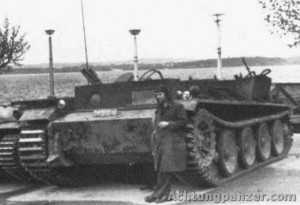
After much thought, and in order to cut down on costs, Bruno decided he did not need the turret.
Welcome to the VK3601. Now, you might be thinking, what is the VK3601? Historically, a transition between the P4 and the Tiger. A design which (when we look at it now) was an inspiration for the design of the Tiger I. So, be happy, you are (in a way) in a Tiger prototype. Do not be overjoyed, this is not a children’s tale. The “box” VK3601 will feel a bit like a nightmare, and drive like one, and act like one. It will have an “ok” gun, decent armor… but other than that you will consider the P4 with the Panther Turret a dancer, compared to your basic VK3601. The VK3601 is also your first tank on which you can make a loss in credits, so pay attention to what you are doing. But, the basics. The VK3601’s designation is something between a Medium tank, and a heavy tank. Once upgraded and with an experienced crew it will be the bane of many tanks. Lacking the speed of a P4 it will act as a very good support for your heavy tanks. What it cannot do is beat heavy tanks alone, and this is because, despite having decent armor it is still a Medium tank. Its gun although strong, capable of punching through higher tier armor will not be “sanely” considered murderous. As such you would do well to move in “Wolf Packs” of tanks with similar speed and firepower. Supporting a bit from afar or even up close during an assault. You have to be aware that you will face very deadly TDs now and SPGs. You have to know the maps now, and enemy tanks. You have to develop a sixth sense of when to move in order not to get hit by an SPG and how to advance to get spotted as rarely as possible.
This said, the VK3601 is a good escort tank, capable of stopping early scouts, and posing a real problem to any foolish early assault. The VK3601 is also an able sniper, when you do not want to aid your bigger buddies or would simply prefer to sit back. What the VK3601 is not is, among other things, a scout. It is too big, too slow and most of all, even if you reach the enemy positions it is unlikely you will get out, if you charged alone. Alone it cannot form the spearhead of an assault, but with a few other VKs or equal tanks there is a decent chance that these tanks could lead a successful storming, depending on the enemy. In essence, the VK is not a fortress, but rather one of the walls of it. Focus fire in a group, aim at joining wolf packs, and that is when the real magic of the VK3601 appears.
A last word of warning. Like mentioned before this tank can turn out a serious loss in credits, so although you could be in a wolf pack, do not join a reckless group of “early chargers”. Especially if you are facing much higher tier tanks. Remain aware of the situation and use any opening to your advantage. Also, plan ahead. You are too slow to react quickly to events on the other end of the map. Pick a role early enough and stick to it. Even if you do not get to destroy anything you will get credits for hits and damage. And in higher tier battles, that is more than enough bonus for damaging a Maus (somehow).
Panzekampfwagen III/IV: Big changes… bring big changes!
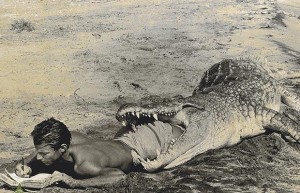
The method of designing the Panzerkampfwagen III/IV was unorthodox, to say the least.
Due to recent changes anybody wishing to drive the Tiger I will have to pass through the Panzer III/IV now. What is the Panzer III/IV? Some sort of hybrid between the Panzer III and IV? Far from it, if I were to name it anything it would be “Mini Panther”. Either way, congratulations, you have reached Tier 5! You might ask yourself though, what now? How does the Mini Panther differ to the Panzer IV? Believe it or not but I checked every number that there is to check and read below for the actual differences, and how to drive this Mini Panther on the field of battle.
There are a few things to say “at a glance” when you compare the starting P4 to the Mini Panther. First of all, the Mini Panther is, overall, better off. It has a stronger “buy in” gun with very decent penetration, damage and accuracy. If you upgraded your P3 fully you will also have a decent start off engine. In box form, the Mini Panther is quicker, with a much stronger gun, and, one of the key factors, decent side armor. Once fully upgraded, the stories change around a bit. A P4 without the Panther Turret when faced off against the Mini Panther is inferior in some ways, and superior in others. First of all, the Mini Panther will have a tougher turret, higher speed and acceleration. It will also have a good turret rotation and a sloped hull. The P4 and the Mini Panther both share the same upgraded gun, so in terms of firepower later on they are “en par”.
However, the moment the Panzer IV uses the Panther Turret it becomes superior in turret armor and most definitely firepower. Surprisingly though (according to the given numbers) the accuracy of the Panther Turret guns are lower than the “basic turret” upgraded gun. Speed, acceleration and reload time will also be greatly impaired. The key factor which is in favor of the Panther Turret for the PIV is the sight range which is definitely higher than for the Mini Panther. Overall the Mini Panther has shorter sighting range than the PIV, even with the PIV’s unupgraded turret.
How to play the Mini Panther? Let us consider the facts. Its gun, although decent for its tier, and accurate can be used as a “Sniping” gun. However with the Mini Panther’s limited sighting range the enemy might spot you quicker and thus fire first before you do. You would have to rely on the help of other tanks to spot the enemy tanks early enough. The Mini Panther has weaker front armor to the PIV, however it has better side armor. Also it has the benefit of a overall well armored turret without it effecting its rotation and speed (the turret actually has a higher rotation). Given its sloped armor, quality gun, low sight range, however, still very good radio range you are looking at a born flanker. Its side armor and frontal armor which are both “sloped” (though the wheels are exposed) allow it to take a bit of a beating while still driving forward. With its engine and relatively low weight it will not be badly hindered by terrain or other obstacles. You could say, that this tank could squeeze in somewhere and then deliver a painful blow, then run off and seek a next target. There is a problem, with playing the Mini Panther. And that is, its hull armor. Although sloped and “decently” tough it will not be capable of facing off against Heavy tanks alone at all.
As long as this part of the guide is, it is necessary to understand the Mini Panther, mainly because, unlike other tanks of its tier it is quicker, and has stronger side armor than most tanks which begs to be exploited. With its gun, although with not a magnificent rate of fire but decent damage and penetration it can become the bane of enemy heavy tanks, TDs and SPGs, as long as you realize that this tank, although decent up front, can be used much better when flanking. However, due to its poor visibility it might rely on other tanks to “see” the enemy while you exploit an entry point to flank the enemy tank group knowing well where they were ahead of time). In the end, the Mini Panther can act defensively, together with other tanks, and be on the offensive role, but my suggestion would be to stay back a bit and see how the situation evolves. If you clearly see an enemy group or heavy tank that could be flanked use your speed and side armor to ignore incoming enemy fire and decimate the head strong foe. There will be only one thing limiting these ambitious plans, your crew. Invest your time in training them, and from a sluggish-quick tank you will have a quick tank, with decent armor, a decent gun… Oh, and remember. Just like in the case of the PIV, in your free time boast about superior German Steel.
Panzerkampfwagen VI Tiger: Achtung, Tiger!
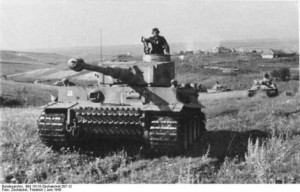
Schmidt finally gave in. He had no idea which way was the enemy base.
I still remember as if it was yesterday… driving down Lakeville when the helpless SPGs missed every time, when all the TD shots bounced off my armor and enemy tanks were crushed under my mighty treads… right, back to reality. Welcome, to the Tiger Tank. I have written a guide on the Tiger before but I will try to keep it short in this specific guide. If you want to read the old guide follow this link.
The Tiger I in its box form is a miserable failure of a heavy tank. A greatly penalized Medium tank which has just gotten out of its baby crib and fell over immediately. But that changes… it most definitely does. The Tiger has a number of things you have to be aware about to use this tank effectively. Its armor, though not excellent is still decently tough. The fact that it is boxed shape makes it troublesome, but the Tiger is not really intended as an assault tank. The long 88 of the Tiger is very accurate, but more importantly, very destructive. I have, in my history of tank driving, destroyed higher tier tanks when their drivers were foolish enough to expose themselves with their flanks or rear. Even a frontal shot from the long 88 on most tanks means a penetration and damage which makes a lot of people reconsider a move forward.
The Tiger tank, this said, is a slow tank, very effective on the defensive, but under the right circumstances it can be a highly effective attack tank. Hold in mind however, that alone any tank will be destroyed on a prepared enemy. Attacking down an empty field though might seem “epic” will end in your destruction. Use cover, but more importantly, if there are high tier SPGs, do not stay in place. In essence, either stay back and snipe away at enemy tanks, or lead the charge, in good ol’ Tiger fashion with a small group of mediums or other heavies. Copying from my old guide here is a key technique to be used with the Tiger:
Fighting up close, the Wittmann methodAside from inadequate starting equipment you will be tied down by an inexperienced crew as well. IF you can, invest those credits in a 75% crew. Otherwise you might find your early games very frustrating. When stuck with the starter turret aim at lower tier tanks and still snipe, but abandon the hope of charging at all, for the first couple of games. The key to the Tigers success is accuracy. IF you are trigger happy you will miss shots and get spotted. Use the “Sniping” mode when you are in position. This will allow you to spot accurately enemy tanks and hits those parts of them which their users did not expect not to be hidden! Meanwhile, use outside view to conceal yourself, or spot what tank(s) you are up against. Share information with your team, especially if you do not have your top radio installed. Deliver upon your enemies the wrath of the Tiger tank!
Rating:9/10 Pros:A whole lot of fun!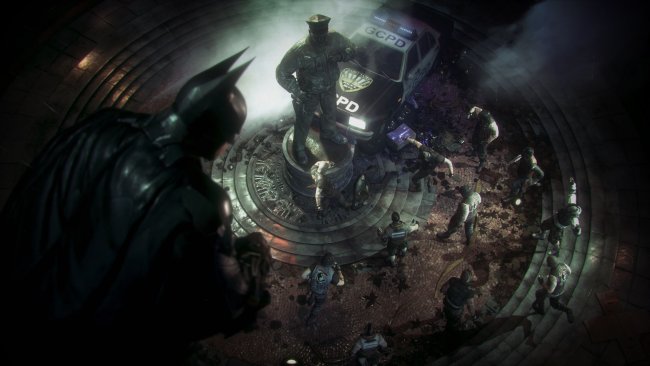


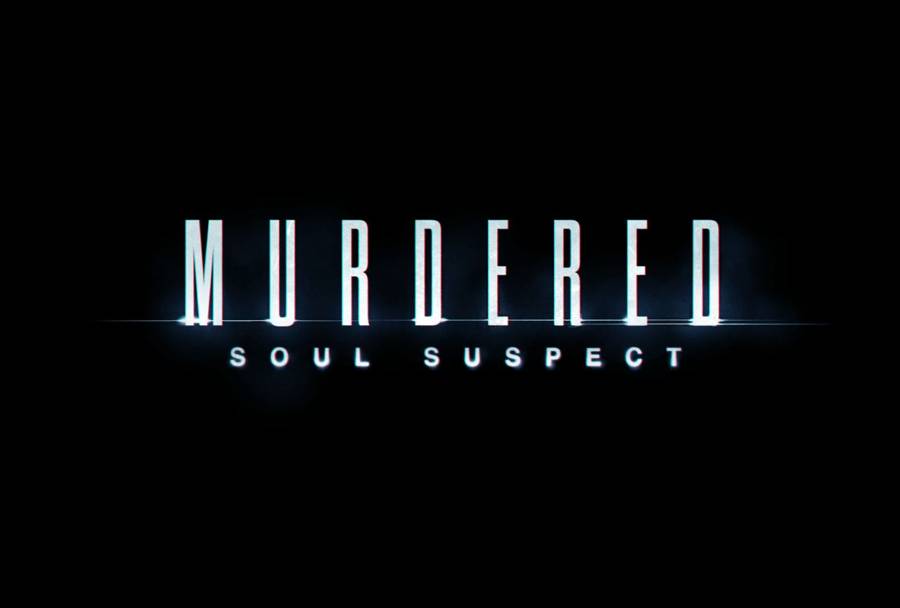
 Minecraft Mod Examination: Natura
Minecraft Mod Examination: Natura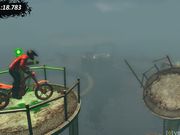 . Plays June 3, 2012
. Plays June 3, 2012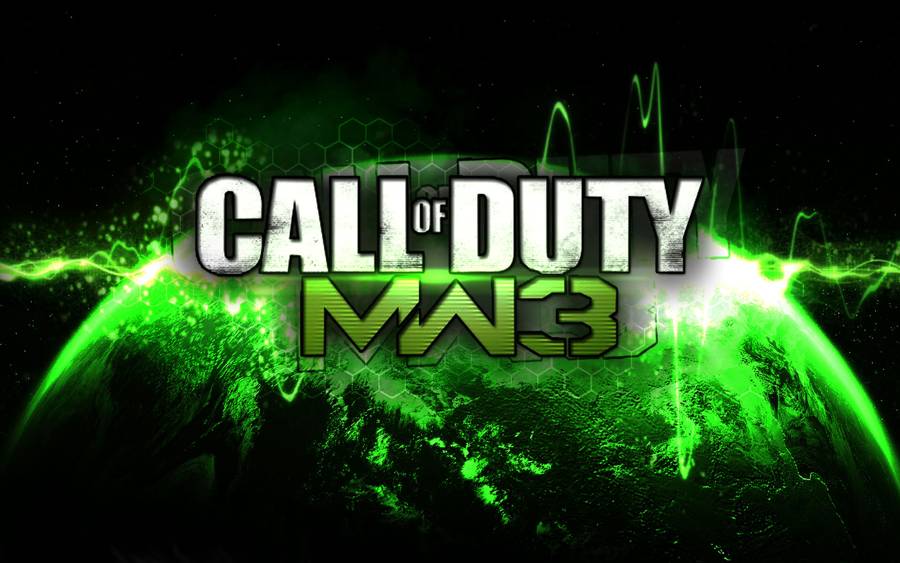 Call Of Duty Modern Warfare 3 Iron Lady Intel Guide
Call Of Duty Modern Warfare 3 Iron Lady Intel Guide Fallout 4 Guide - Where To Find Infinite Amounts Of Aluminum For Your Settlement
Fallout 4 Guide - Where To Find Infinite Amounts Of Aluminum For Your Settlement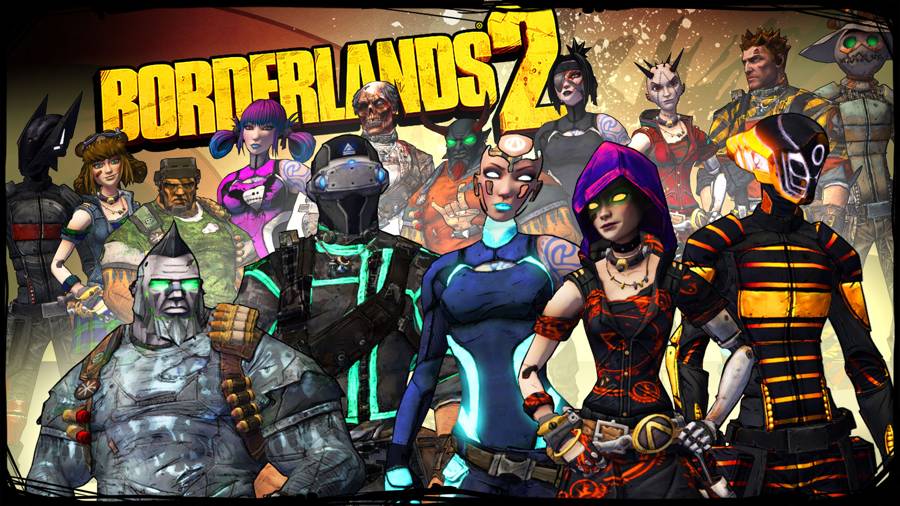 Borderlands 2 Guide: Wilhelm Boss Guide
Borderlands 2 Guide: Wilhelm Boss Guide